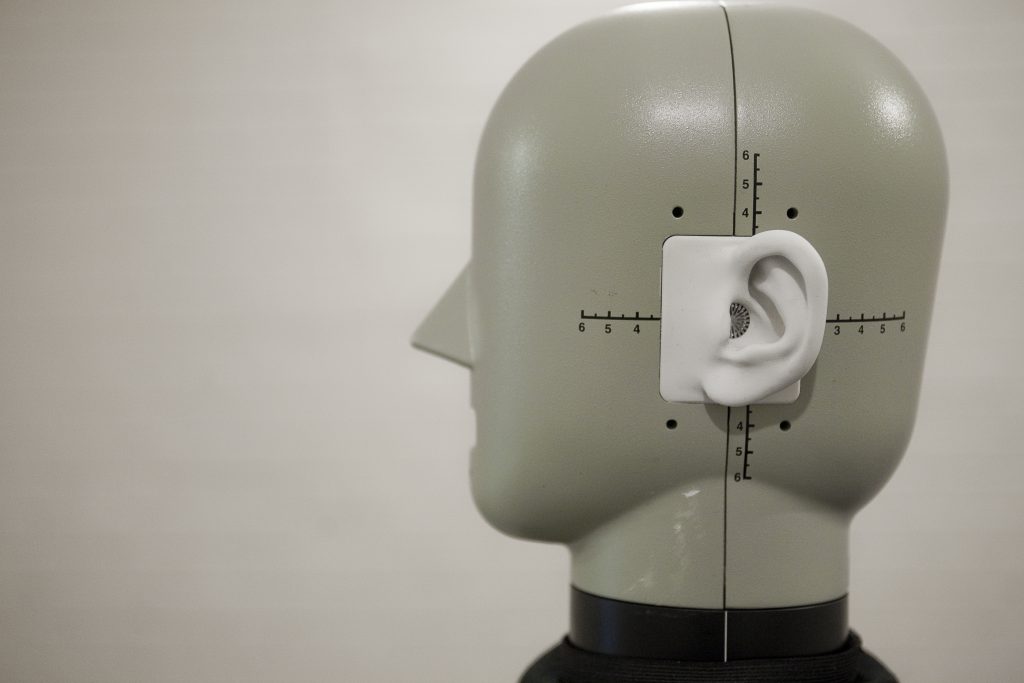Turning Schroeder diffusers into room acoustic absorbers
Absorption from profiled surfaces
This project studied profiled structures to determine and understand the source of unexpected excess absorption and so produce a new type of sound absorber. Sound absorbers are one of the most important means for acoustics control. They are applied to industrial barriers and within factories to provide noise control; this might be done to reduce noise annoyance or to reduce the risk of hearing damage. In many acoustically critical spaces, such as railway stations or recording studios, absorbers are used to reduce reverberance and echoes and so improve the intelligibility of speech or the quality of music.
Schroeder diffusers – cross section showing series of wells
The absorption mechanism studied was first observed with Schroeder diffusers (these diffusers consist of a series of wells of different depths, a cross section is shown in the diagram). Four key studies before the EPSRC grant lay the foundation for the project. Fujiwara et al measured unusually high absorption coefficients for these diffusers, particularly badly constructed structures. This provided evidence that these structures could be redesigned to make absorbers, but Fujiwara’s results contradicted the much lower absorption measured by a diffuser manufacturer in an independent laboratory following ISO 354. Kuttruff, suggested that the absorption from Schroeder diffusers was a combination of two mechanisms: ¼ wave resonances within the wells, and viscous losses due to energy flow between the wells. The substantial energy flow occurs because the system attempts to equalize the pressure discontinuities between different depth adjacent wells. While this was an appealing explanation, no proof to show this was true was provided. Indeed, Kuttruff had to use unrealistic values for the surface geometries in his prediction model to get absorption coefficients as high as that measured by Fujiwara. Mechel, suggested that placing a resistive layer at the mouth of the wells – where the particle velocity is greatest – could further enhance the absorption, Figure 1b. The resistive layer also damped out the sharp resonant peaks in the absorption verses frequency response. Mechel’s work, however, was purely theoretical, and his prediction model was not verified against measurement. To summarise, while previous investigations had shown that excess absorption could occur and hypothesised possible mechanisms, they lacked direct comparison of predictions and measurements to provide proof for their claims. In addition, the investigations had not gone much beyond a standard diffuser construction to maximise the absorption produced. Hence, the grant was proposed and carried out.
Major project achievements
The three major achievements of the project have been:
- To provide proof for the source of the absorption, by validating a theoretical model for the structures which matched experimental results.
- To use the validated theoretical model and understanding of the mechanisms to improve the absorption, especially by correctly choosing the well depth sequence and using perforated sheets in the wells.
- To develop a new multi-microphone measurement system to enable the performance of periodic, non-uniform impedance structures to be determined in the free-field as a function of incidence angle.
This three year research grant was funded by the Engineering and Science Research Council (EPSRC) of Britain, grant number GR/L34396. 1 November 1997 –5 May 2001. Rated “Tending to Outstanding”.
Principal investigator: Prof Trevor J. Cox. Co-Investigator: Prof Y. W. Lam. Research Assistant Ms Wu Tao
Selected publications
- Tao Wu, Trevor J. Cox, and Y. W. Lam, A profiled structure with improved low frequency absorption, J.Acoust.Soc.Am. 110(6),3064-3070, 2001.
- T Wu, T J Cox, and Y W Lam. From a profiled diffuser to an optimized absorber. J.Acoust.Soc.Am. 108(2) 643-650 2000.
- Tao Wu. Profiled Absorbers: Theory, Measurement and Design. Ph.D. Thesis, University of Salford. 2003.
